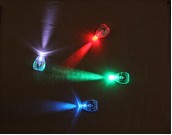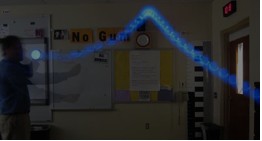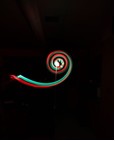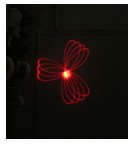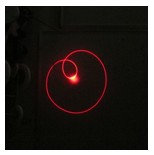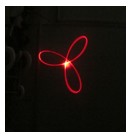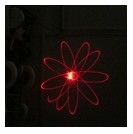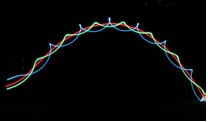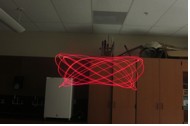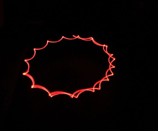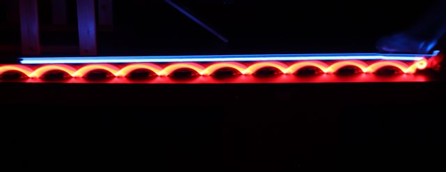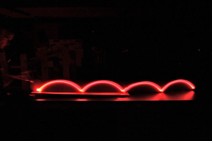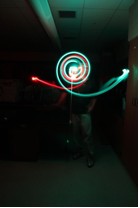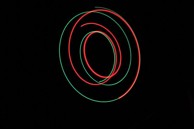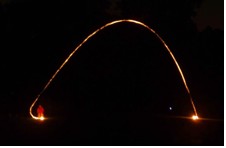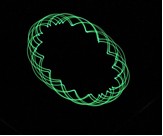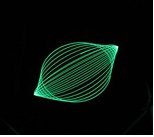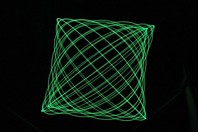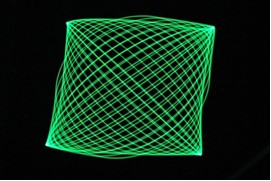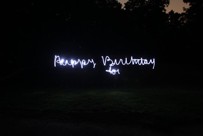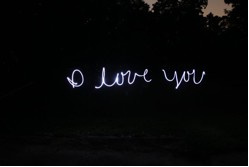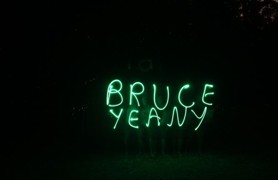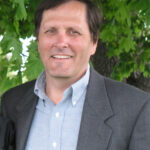 by: Bruce Yeany
by: Bruce Yeany
The micro LED lights known as Rave lights have become popular with students at dances and parties. With the lights turned down, kids have these lights on their hands or in gloves, and the results are totally awesome when they wave their hands around. Watching this phenomenon takes me back to the era of the disco ball and laser light shows. It became apparent to me that these little lights would be fantastic when incorporated into the study of motion. Using these lights and a digital camera, it would be fairly easy to record the motion of moving objects for closer study. Rolling, spinning , swinging, falling, projectile motion, etc. can all be captured using a camera and these little lights.
Can you figure out how these were done?
Here are some pictures I have taken over the past year. Almost all were taken using these small lights. In some cases the shutter was only open for a fraction of a second and in others it may have been open for several seconds. Many of the following pictures were made using a laser pointer.
This picture depicts fire being thrown by a small trebuchet.
And of course, it’s also fun to try and write messages….. one small problem is that they appear backwards to the camera.
Bruce Yeany has been teaching physical science in the Annville-Cleona School district for the last 35 years. He enjoys working with students and building materials for his classroom. Over the years he designed several pieces of classroom science equipment that are produced and sold commercially including the World’s Simplest Motor and the Fountain Connection. Bruce is also an amateur photographer as is his wife, Mary. As the middle school yearbook adviser, he is quite used to having a camera around his classroom. By combining his hobby in photography and looking for new ways to demonstrate the motion of objects, Bruce has found that using micro LED lights and a digital camera can help him freeze the movement of motion and turn it into works of art.
